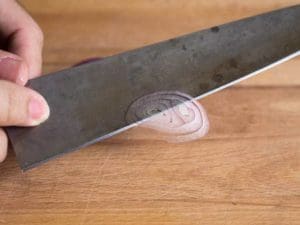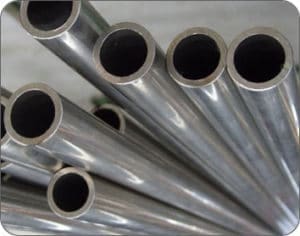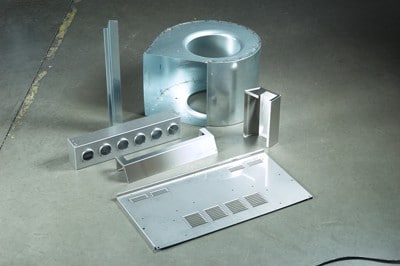44 Years of Experience Working with Sheet Metal Materials
When deciding on the right material for your project, trust the experts. They’re out there designing, forming, bending, cutting, and punching various sheet metal materials into the quality parts integrated all around you. Partner with a quality sheet metal fabricator early and get a second opinion. Too many times, companies scale and fail because they didn’t speak to an expert in the beginning. Minimizing your project’s cost while maximizing quality requires a deep familiarity with fundamental sheet metal materials like carbon steel, aluminum, and stainless steel.
Planning and Prototyping Saves Money
Everyone wants cost-effective solutions for their project, and there is a common misconception that the project will work itself out if you cut corners in the beginning. Do your own planning, but bring in professionals for design, cost reduction, and prototyping. Carbon steel, stainless steel, & aluminum each have properties that behave differently during fabrication, under stress, and over time. Not to mention your part may need to fit into a larger project with other materials, and so it’s important to understand the difference between aluminum and stainless steel when subjected to various chemicals and conditions. You should treat material selection as serious as you take manufacturing.
From early prototyping and cost-reduction consultations, Estes partners with your company to build a seamless system of quality manufacturing and inventory management. Serving the nation from our headquarters at the Crossroads of America, we are the sheet metal experts you can trust to get the job done right.
Quality and Price: Carbon Steel vs. Stainless Steel vs. Aluminum
Different sheet metals have different properties in fabrication and forming. Choosing the right sheet metal material is important because it directly impacts quality and price. The best metal for one project can be the worst in another. For example, steel is harder than aluminum but aluminum doesn’t rust. By offering a variety of sheet metal options for design and production, Estes can produce metal pieces with materials specific to their intended use. From heavy to lightweight, durable to flexible, Estes Design & Manufacturing communicates and aids clients in understanding the advantages of different material options based on industry use.
Carbon Steel
 As one of the most widely used steel metals, carbon steel is highly malleable and comes in a range of carbon content levels. Low-carbon steel is popular for its strength and affordability, while high-carbon steel finds more niche opportunities in due to lighter weight and ability to hold a finely sharpened edge (see image). Estes distinguishes its carbon steel with four different finishes: cold rolled, hot rolled, galvanized, and galvannealed. Cold rolled steel is more brittle than hot rolled and also causes more concern with forming operations. Hot rolled is used for forming steel and is less expensive than cold rolled finishes. Carbon steel is usually brittle and cannot be used for welding. It also loses its flexibility in below-freezing temperatures, causing the steel to crack.
As one of the most widely used steel metals, carbon steel is highly malleable and comes in a range of carbon content levels. Low-carbon steel is popular for its strength and affordability, while high-carbon steel finds more niche opportunities in due to lighter weight and ability to hold a finely sharpened edge (see image). Estes distinguishes its carbon steel with four different finishes: cold rolled, hot rolled, galvanized, and galvannealed. Cold rolled steel is more brittle than hot rolled and also causes more concern with forming operations. Hot rolled is used for forming steel and is less expensive than cold rolled finishes. Carbon steel is usually brittle and cannot be used for welding. It also loses its flexibility in below-freezing temperatures, causing the steel to crack.
Stainless Steel
 Stainless steel is made from the above described carbon steel with an additional layer of chromium oxide, about a 10.5% added weight in chromium. This layer provides a barrier against corrosion and rusting. Unlike protective coverings that tend to dissolve or wear down over time, chromium is prevalent all the way through the steel, keeping the material continually replenished and protected. Although typically more expensive, stainless steel is used for sinks, street furniture, cable trays, surgical instruments, water tubing, wire, etc.
Stainless steel is made from the above described carbon steel with an additional layer of chromium oxide, about a 10.5% added weight in chromium. This layer provides a barrier against corrosion and rusting. Unlike protective coverings that tend to dissolve or wear down over time, chromium is prevalent all the way through the steel, keeping the material continually replenished and protected. Although typically more expensive, stainless steel is used for sinks, street furniture, cable trays, surgical instruments, water tubing, wire, etc.
Aluminum
Known as “the metal of modern life”, aluminum is lightweight yet durable. Its versatile, non-toxic, and corrosion resistant surface makes aluminum the ideal material for more fuel-efficient cars, electronics, and buildings. It is also highly recyclable, so a large percentage of all aluminum produced in the world is still in use today.
Contact us to learn more about our material offerings, and how we can help you!
Sources:









